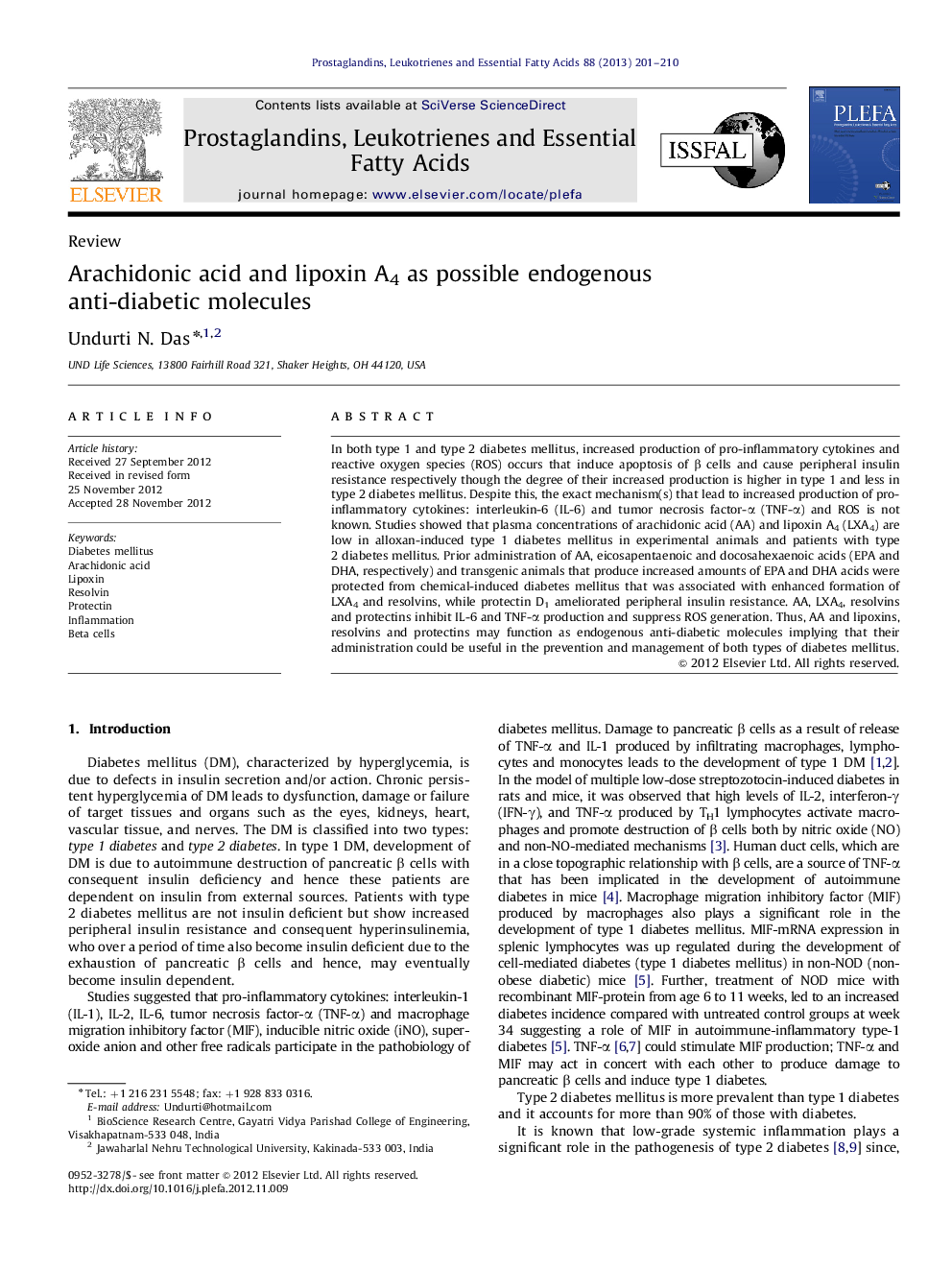| کد مقاله | کد نشریه | سال انتشار | مقاله انگلیسی | نسخه تمام متن |
|---|---|---|---|---|
| 2777685 | 1152751 | 2013 | 10 صفحه PDF | دانلود رایگان |

In both type 1 and type 2 diabetes mellitus, increased production of pro-inflammatory cytokines and reactive oxygen species (ROS) occurs that induce apoptosis of β cells and cause peripheral insulin resistance respectively though the degree of their increased production is higher in type 1 and less in type 2 diabetes mellitus. Despite this, the exact mechanism(s) that lead to increased production of pro-inflammatory cytokines: interleukin-6 (IL-6) and tumor necrosis factor-α (TNF-α) and ROS is not known. Studies showed that plasma concentrations of arachidonic acid (AA) and lipoxin A4 (LXA4) are low in alloxan-induced type 1 diabetes mellitus in experimental animals and patients with type 2 diabetes mellitus. Prior administration of AA, eicosapentaenoic and docosahexaenoic acids (EPA and DHA, respectively) and transgenic animals that produce increased amounts of EPA and DHA acids were protected from chemical-induced diabetes mellitus that was associated with enhanced formation of LXA4 and resolvins, while protectin D1 ameliorated peripheral insulin resistance. AA, LXA4, resolvins and protectins inhibit IL-6 and TNF-α production and suppress ROS generation. Thus, AA and lipoxins, resolvins and protectins may function as endogenous anti-diabetic molecules implying that their administration could be useful in the prevention and management of both types of diabetes mellitus.
Journal: Prostaglandins, Leukotrienes and Essential Fatty Acids - Volume 88, Issue 3, March 2013, Pages 201–210